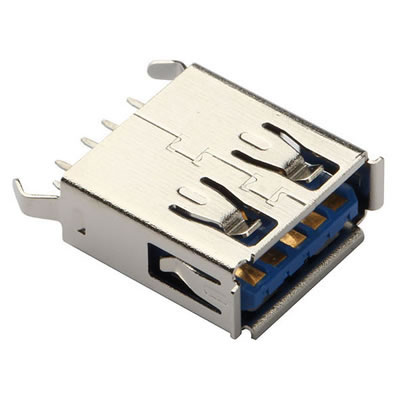What Are the Differences Between USB 3.0 and USB 2.0? Are They Interchangeable?
 2025-03-28 15:03:27
2025-03-28 15:03:27

USB 3.0 and USB 2.0 differ in several aspects, mainly in terms of transmission speed, interface design, and power management. However, they are backward compatible to a certain extent.
1.Main Differences
Parameter | USB 3.0 | USB 2.0 |
Maximum Transfer Speed | 5Gbps (actual approx. 3.2Gbps) | 480Mbps (actual approx. 35MB/s) |
Port Color | Usually blue (some devices may vary) | Generally black or white |
Data Transfer Mode | Bidirectional full-duplex (can read and write simultaneously) | Unidirectional half-duplex (cannot read and write at the same time) |
Power Supply Capability | Provides up to 900mA current | Provides up to 500mA current |
Number of Pins | 9 metal contacts (5 additional contacts) | 4 metal contacts (power, ground, data+, data–) |
Power Management | More efficient, supports low-power modes (U0, U1, U2, U3) | Lower power management efficiency |
Compatibility | Backward compatible with USB 2.0 ports | Limited to USB 2.0 transfer speeds |
2.Are USB 3.0 and USB 2.0 Interchangeable?
✅ Yes, but with limitations depending on the interface specifications:
1.USB 3.0 Device in a USB 2.0 Port
· The device will work, but the transfer speed will be reduced to USB 2.0’s 480Mbps.
· The power supply is also limited by USB 2.0, meaning high-power devices may not function properly.
2.USB 2.0 Device in a USB 3.0 Port
· Fully compatible, but the transfer speed will still be limited to USB 2.0 speeds.
⚠ Note: If using a USB 3.0-specific cable or device, it may not fully function in a USB 2.0 port.
3.How to Differentiate USB 3.0 and USB 2.0?
· Color Difference: USB 3.0 ports are usually blue, while USB 2.0 ports are black or white.
· Number of Pins: USB 3.0 has 9 metal contacts, whereas USB 2.0 has 4 metal contacts.
· Markings: USB 3.0 ports may have the "SS" (SuperSpeed) label, while USB 2.0 ports do not.
4.Summary
· USB 3.0 offers faster speeds, better power management, and higher power supply capabilities compared to USB 2.0.
· USB 3.0 is backward compatible with USB 2.0 devices, but the speed will drop to USB 2.0 levels.
· USB 2.0 devices can be used in USB 3.0 ports, but performance will remain at USB 2.0 speeds.
· USB 3.0 and USB 2.0 can be distinguished by color (blue vs. black/white), markings (SS), and pin count.
If you frequently transfer large files (such as HD videos, game installation packages, etc.), it is recommended to use USB 3.0 devices for faster data transfer speeds.


